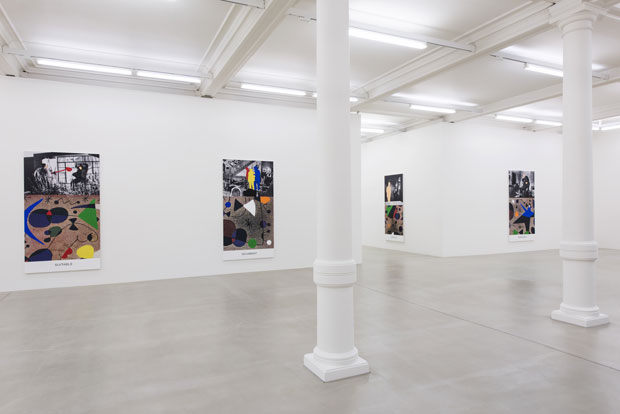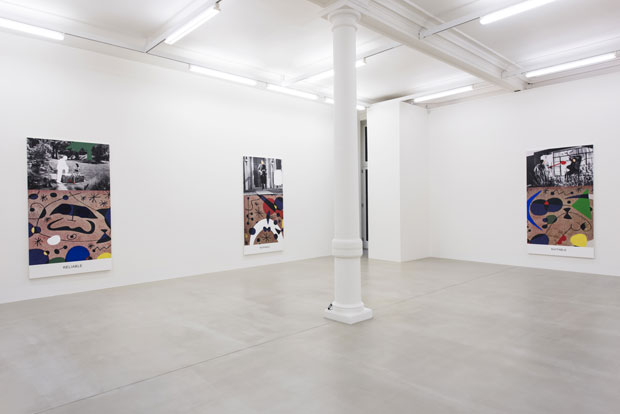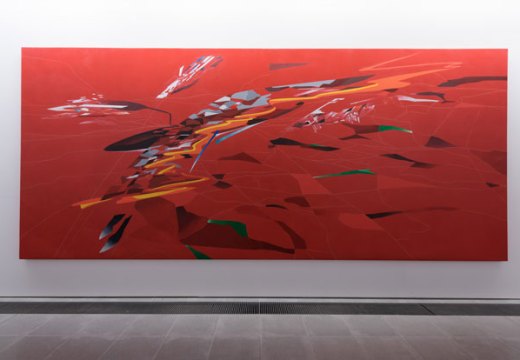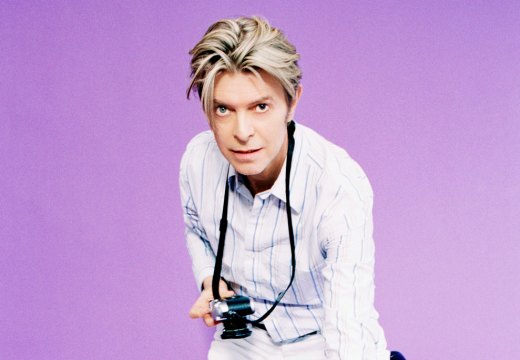On a freezing afternoon earlier this month, I broke from work for 20 minutes to take a stroll up the high street. Within moments of rounding the corner into the scrum of the street market, I felt the drop of rain on the tip of my nose. When this happens on a day this cold, in January, in London, there is only one course of action: seek shelter. Before I knew it, the sky was tipping down slush puppies of sleet. Already half soaked I ducked through the door of a charity shop.
The air inside smelt just mildly of mildew. Cardboard boxes rammed full of unwanted trinkets, crockery and cookbooks were stacked halfway to the ceiling in defiance of the staff’s attempts to create meaning through the medium of category labels. Helen Marten, eat your heart out. This was not just any charity shop; it was the ur-charity shop, a place that would look too studied were it packed up and reconstructed as a stage set.
I squelched into a corner and reflexively began rummaging through a box. Every item I pulled out seemed more bathetic than the last. Who bought this junk in the first place? A royal wedding souvenir ashtray gave way to a pin cushion, embroidered with the phrase ‘Life is too Short to be Taken Seriously. Golf is another Matter Entirely’, followed by a CD3 classical music compilation, ‘curated’ by Sven-Göran Eriksson. Then, unexpectedly, a copy of the catalogue to ‘Pure Beauty’, John Baldessari’s 2008 retrospective at Tate Modern.
St Roch, the patron saint of second-hand trade, obviously has a fine sense of humour, not to mention a decent knowledge of conceptual art. ‘Pure Beauty’ is one of the best exhibitions the Bankside Bunker has mounted to date, up there with Agnes Martin, Matisse’s cut-outs and the current Rauschenberg extravaganza. The show took a hard look at the deadpan conceptualism of Baldessari’s oeuvre, edited it down and hung it back up as a giant exercise in comic timing.

Installation view of ‘John Baldessari: Miró and Life in General’ at Marian Goodman Gallery, London. © John Baldessari. Courtesy the artist and Marian Goodman Gallery, New York, Paris & London. Photo: Thierry Bal
As it happens, there is a Baldessari show called ‘Miró and Life in General’ going on at Soho’s Marian Goodman Gallery (until 25 February). The exhibition features a bunch of new works which juxtapose black-and-white B-movie stills with adjectives of the sort you might use on a billboard advertisement: ‘Pertinent’, ‘Reliable’, ‘Connected’ – that sort of thing.
To complicate all this, details from Joan Miró paintings have been dropped into the mix and the silhouettes of figures filled in with primary colours. They jar as sharply with their surroundings as the toons playing out the key roles in Roger Rabbit do with their live-action counterparts. Naturally, none of the source paintings or films are identified. Each one is a charity shop jumble of high and low culture, with more or less the same comic value as that Sven-Göran Eriksson classical compilation. Or perhaps even the ‘Pure Beauty’ catalogue.
I walked in, I laughed, and I didn’t stop until I left. But with Baldessari – or at least, the best Baldessari – the laughter is qualified. As if I need to tell you, much of his work is composed of apparently random combinations of image and text like these. Why, you find yourself asking, is this so funny? More to the point, what does ‘funny’ mean, anyway? Once you get going on this train of thought, a trapdoor of existential questioning comes loose under your feet.
*
If ever proof was needed that we live in strange times, the New York Times has run an extended piece that essentially serves as a 3,000-word travel guide to south west London’s second grubbiest district – Tooting.
Tooting, if you were romantically inclined, could be described as a Gateway to Suburbia. Head due south on the main drag and the tight knit of mean Edwardian terraces and public buildings, graffitied and stained to a respectable inner city standard, gradually dissipates into a sprawl of retail parks, roundabouts and mock Tudor pubs. You have reached liminality – or, to give it its proper name, Colliers Wood.
But back to that article. You could pick stranger places to take a holiday, but not many. If your idea of a good day out is a trip to Primark followed by a vegetarian curry, this is the place for you. But on the surface of it, there isn’t much in the way of aesthetic relief: no galleries, no museums, and, despite the NYT’s reference to the ‘century-old statue of King Edward VII’, no public art of any note.
Here, the fun’s to be had below surface – in Tooting Broadway tube station, to be precise. If ever you’ve dreamed of rising to heaven on the celestial walkway of A Matter of Life and Death, take solace: you can descend into hell on a spectacular escalator to rival that marvel of set design in Powell and Pressburger’s 1946 classic.
Right up until the last few seconds of the ride, all you can see of the platforms is a bright, almost blinding blast of light. Cultish floodlamps on thin but sturdy stems punctuate the central divisions of the three stainless steel escalators, standing to attention as you clank down the barrel vault to the trains. It’s a pleasure, even at morning rush hour.
Charles Holden, the architect responsible for much of the best of London’s suburban tube network, was a devout Christian, and here it really shows. If Norman Foster’s Jubilee Line stations are often (lazily) compared to cathedrals, the sublime and possibly accidental wonders of Tooting Broadway are something else entirely.
Unlimited access from just $16 every 3 months
Subscribe to get unlimited and exclusive access to the top art stories, interviews and exhibition reviews.
















![Masterpiece [Re]discovery 2022. Photo: Ben Fisher Photography, courtesy of Masterpiece London](http://www.apollo-magazine.com/wp-content/uploads/2022/07/MPL2022_4263.jpg)
It’s time for the government of London to return to its rightful home